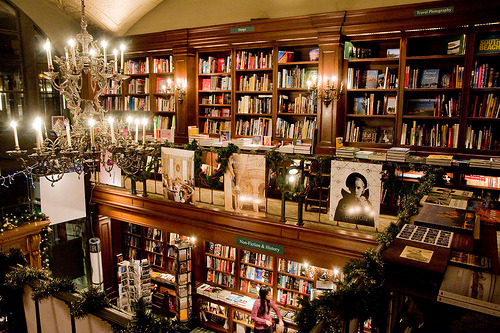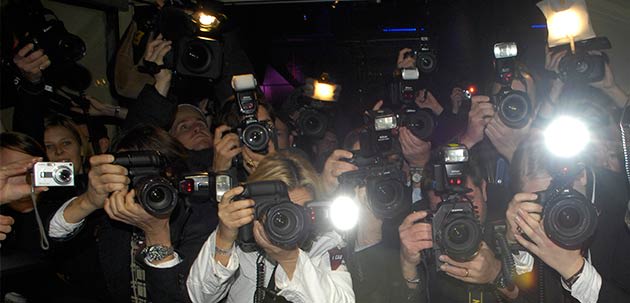We rarely receive such delightful and unexpected messages as that which came to us on Christmas Eve from a customer in Fairfax, Virginia, who shared with us her photos of our Tea House (above) and Nutcracker Pavilion table lanterns in her home.
They are so evocative that we requested to share them here, and she graciously accepted.
Happy holidays and all the very best for the new year!
Tuesday, December 30, 2014
Sunday, December 7, 2014
Lecture and Master Class at the ICAA
We would be remiss if we did not mention our recent lecture at the ICAA, the Institute of Classical Architecture and Art in New York, entitled Pencil and Brush: Architectural Watercolors, held on the evening of the 23rd October. It was an illustrated lecture on the history of French classicism from the 17th to the 19th centuries, and we were delighted to see many familiar faces and speak to a sold-out house.
As the body of the lecture was illustrated with images of rather staid classical buildings, we ended the talk on a lighter note with the image of this tent (at top) once in the gardens of the Parc Monceau here in Paris, and an audible gasp actually went through the audience.
The Saturday following, we held a master class on watercolor technique for architectural rendering, sharing our trade secrets to an over-subscribed audience. It was a day-long affair, from 10 am to 6 pm, with an hour's pause for lunch. We enjoyed giving both presentations immensely and the organizers were very pleased with the response, and we look forward to a new series of talks next year.
Saturday, November 29, 2014
Our Architectural Desk Boxes Featured in Traditional Home
A far-too-long hiatus, but we are back to report that Traditional Home has featured our new desk boxes in their holiday issue. A small neoclassical ensemble for your desktop.
There are three boxes, each of them in architectural shapes: the Tower stacking box, the Orangerie pencil box and the Palace letter caddy (above, with the original watercolor).
You can find them at our AW online shop.
And here is the Traditional Home clipping:
There are three boxes, each of them in architectural shapes: the Tower stacking box, the Orangerie pencil box and the Palace letter caddy (above, with the original watercolor).
You can find them at our AW online shop.
And here is the Traditional Home clipping:
Wednesday, June 18, 2014
A new video featuring AW journals, boxes, stationery and table lanterns
Recently, we've been busy in the editing room and are happy to post a new video compilation of the first two seasons of paper products we've designed for Libretto Group of NYC.
The video runs just over two and a half minutes and showcases our boxed note and correspondence cards, hardbound journals, desk boxes, table lanterns, nesting boxes, and holiday items as well. Enjoy.
To locate a store near you, visit Libretto Group, or order at the AW online shop.
Sunday, June 1, 2014
A new video of our book
CENTRAL PARK NYC: An Architectural View
We are delighted to post this new video of our Rizzoli book, CENTRAL PARK NYC: An Architectural View. It runs two minutes and features numerous images, both our watercolors and photography old and new, that enrich the book's pages.
Enjoy.
Enjoy.
Wednesday, April 23, 2014
An ICONic Article
We are delighted to note that, this past Sunday, our work was featured in Welt am Sonntag, the Sunday magazine of Berlin's newspaper of record. In a rare honor, the watercolor vignette of A is for Acanthus from our Architectural Alphabet was featured as the cover illustration.
But of course it was Einkuss, Bernd's Belgian pug, who stole the show.
Wednesday, February 5, 2014
Table lanterns, journals and boxed stationery now available at the AW online shop
Some weeks ago, we had announced that, after a much-too-long hiatus, our ever-popular table lanterns have returned, now distributed worldwide through Libretto Group. We are pleased to announce today that the lanterns are also now available at the Architectural Watercolors online shop for all those who do not have Libretto retailers in your area.
To accomodate these additions, we have reorganized the AW online shop, adding product categories for the table lanterns as well as our new lines of boxed stationery and hardbound journals.
We are also happy to report that Libretto will soon be releasing three new table lantern designs and several other stationery products for the spring season, and we will be posting about them shortly.
Below are photographs of these new AW products and hotlinks to them:
Wednesday, January 22, 2014
Help Save the Rizzoli Bookstore in Mahattan
The Rizzoli Bookstore and its iconic Beaux-Arts home at 31 West 57th Street in Manhattan has been slated for demolition to make way for luxury high-rise apartments.
We ask everyone concerned for historic preservation to take a moment to sign the petition here to ask the NYC Landmarks Preservation Commission to reconsider its ruling and to designate the 109 year-old structure and its sumptuous interiors as a deserving landmark--how could such a worthy building not already be landmarked?--for future generations.
Prior decisions have been reversed but time is of the essence, and every voice does indeed count to bring enough public pressure to bear to save one of New York's most beautiful literary landmarks from the wrecking ball.
Saturday, January 18, 2014
La Maîtresse en Titre, an enduring French tradition
As the BBC is fond of calling him lately, "the man said to be the President of France" was—"perhaps"—infamously photographed in a crash helmet, leaving a purported love nest shared with a well-known actress while his chauffeur-driven moto waited at curb. The chauffeur of the Presidential Scooter, Closer magazine reported in an explosive seven-page exposé, also delivered fresh croissants in the mornings.
Hollande, a committed bachelor, has refused to explain himself, citing a longstanding French tradition of not delving too closely into the private lives of its public servants (with good reason), and the implicated actress has now sued Closer for libel, another longstanding French tradition for public figures who find themselves facing the unwelcome glare of unwanted publicity.
Meanwhile, in a dramatic development worthy of a soap-opera plot twist, the current Somewhat First Lady of France, Hollande's companion Valerie Trierweiler, has precipitously secluded herself in a Parisian hospital, suffering from "shock."
Unsurprisingly, President Hollande's abysmal poll numbers have rebounded by several percentage points, since en ce pays-ci respect is axiomatically accorded a virile leader, whatever his politics or abilities. With the latest revelation that he had managed to keep the alleged affair secret for over two years, including a hotly contested presidential campaign, the thinking goes that Hollande may indeed have hitherto unremarked managerial skills. And after all, Hollande presides over a country which actually has a name for the just-after-work hours so propitious for infidelity—l'heure bleue—and which also has a tradition of selecting iconic sex symbols such as Brigitte Bardot and Catherine Deneuve as models for Marianne, the official state muse.
After her death, Madame du Barry, a nubile denizen of the Parc, ascended to la Pompadour's position but never her station. (Below, François Boucher's odalesque of Jeanne Bécu shortly before she became a countess.)
But the quintessential concubine was Madame de Montespan, l'Athenée—well-born, clever, scheming, haughty and ambitious—who had bewitched Louis XIV in his early middle age (quite literally and scandalously with a love philtre procured from a satanist who also brewed very efficient poisons, but that is another story). The king sired four illegitimate children with her, all later ennobled, one of whom was later exiled as an insurrectionist. While in royal favor, "La Montespan" reigned as de facto queen, with a suite of rooms at Versailles that eclipsed those of the actual queen, the homely and devout Infanta, Maria Theresa.
Louis XIV's German sister-in-law, la Princesse Palatine, in her posthumous letters reported that during the Dutch Wars, Louis XIV dutifully spent much of each campaign season at the front, presiding over war councils and generally being deferred to, though “he took quite a long time dressing; he had his moustache curled and sometimes spent half an hour before the mirror arranging it with wax.“ (With victory in sight, the undertaking degenerated into showmanship and farce, as when the king invited his decorator and gardener to tour the siege of Cambrai in 1677, instructing his minister Colbert to pay Le Brun and Le Nôtre each 1500 livres for their pains.)
And it was at Cambrai—a jump-the-shark moment if ever there was one—that the king joined his armies with the queen and two mistresses in tow like a band of gypsy camp followers. German mercenaries heckled Madame de Montespan as they marched in revue, whistling and shouting, “Konigs Hure!" At dinner that evening, the king inquired how she had liked the maneuvers and Montespan replied, “Perfectly lovely, only I find the Germans far too naïve for insisting upon calling everything by its proper name.“
It was also understood that Madame de Maintenon, a late and pivotal mistress of Louis XIV, controlled state affairs by forcing all ministers and petitioners to pass through the gauntlet of her appartements at Versailles if they hoped to gain access to the king. She was known at court as "Madame de Maintenant" (Madame Now), and had doubtless married the king privately, though this was never officially acknowledged.
Like just about everything else during the Ancien Régime, the changing of the guard was also handled with aplomb. In one of those almost-too-good-to-be-true moments of history which are nonetheless true, Madame de Montespan, on her way out, and Madame de Maintenon, on her way in, first met on a staircase in Versailles. Madame de Maintenon was ascending and Madame de Montespan descending. The former remarked, "I see that you are going down, Madame, while I am going up."
Upon her fall, which was both spectacular and precipitous, la Montespan exiled herself to a nunnery and occupied herself with expiatory good works, in keeping with another longstanding tradition of discarded royal mistresses, as hospitals in that century were where the destitute were brought to die.
Plus ça change, plus c'est la même chose.
Monday, January 6, 2014
Strawberry Fields
Following is an augmented excerpt of the chapter "Memorials and Monuments" from our latest book, Central Park NYC, published this past September by Rizzoli.
The garden, of course, is named after one of Lennon's most famous Beatles songs, Strawberry Fields Forever, a haunting psychedelic reminiscence of his childhood secret garden, the grounds of the Strawberry Field orphanage in Woolton, Liverpool. The iconic Imagine mosaic, a simple round set in the pavement at the heart of the garden, has become a shrine to Lennon’s memory, collecting notes, flowers and votive candles from his myriad fans, and it is the site of annual vigils to celebrate his birth and mourn his death.
Though often described as interpreting traditional Roman patterns, the design is actually far more expressive than this reading allows and alludes to Lennon's uniquely provocative pacifism and strongly Buddhist leanings and worldview. (Above, Lennon and Ono staging their famous bed-in for peace in Amsterdam in 1969.) IMAGINE, the title of Lennon’s famous 1971 peace anthem, holds the center of an abstracted lotus flower made of thirty-two radiating segments, the number of Buddha’s virtues. (Below, Buddha on the lotus throne.)
However, the Imagine mosaic takes Lin’s abstraction a step further by renouncing three-dimensionality entirely and setting its single-word message into the earth, where it can be trod upon or reverenced—a wry and profoundly insightful evocation of Lennon’s humanity and spirit.
And finally, and as Buddha himself would have observed, there is nothing new under the sun and we find a remarkable conceptual precursor in the 18th-century French garden of Ermenonville, the Altar of Reverie—a simple cylindrical socle, artfully aged, inscribed with the invocation, "To Dream."
Subscribe to:
Posts (Atom)




















.jpg)





















